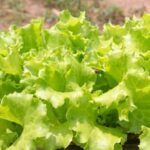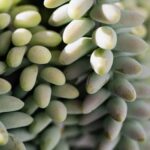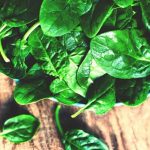Are you interested in starting your own vegetable container garden but don’t know where to begin? If so, you’ve come to the right place. In this article, we will provide you with a step-by-step guide to vegetable container gardening. Whether you’re a beginner or an experienced gardener, this quick start guide will help you get the most out of your container-grown vegetables.
Container gardening has become increasingly popular in recent years, and for good reason. It offers a convenient and flexible way to grow your own produce, even if you have limited outdoor space. With the right containers and proper care, you can enjoy a bountiful harvest of fresh vegetables right on your patio or balcony.
In this guide, we will cover everything you need to know to get started with vegetable container gardening. From choosing the right containers and selecting the best vegetables to soil preparation, watering, and pest control, we’ve got you covered. By the end of this article, you’ll have all the information you need to start your very own thriving vegetable container garden. So let’s dive in and get started.
Benefits of Container Gardening for Vegetables
When it comes to growing vegetables, the traditional method of planting them in a backyard garden is not always feasible for everyone. This is where vegetable container gardening comes into play. There are several benefits of opting for this method of gardening, and it’s worth considering if you’re limited on space or don’t have access to a traditional garden plot.
One of the primary benefits of vegetable container gardening is the ability to grow your own produce even if you have limited space. Whether you live in an apartment with just a balcony or a house with a small yard, containers can be placed on any available flat surface, making it accessible to virtually anyone.
Another advantage of container gardening for vegetables is that it allows for more control over the growing environment. You can easily move containers around to ensure they receive the optimal amount of sunlight throughout the day. Additionally, containers can be brought indoors during inclement weather, protecting your plants from harsh conditions.
Container gardening also reduces the risk of soil-borne diseases and pests compared to traditional in-ground gardens. Since you’ll be using store-bought potting mix instead of existing soil, you’re less likely to introduce harmful organisms to your plants. Plus, containers may be easier to monitor and treat for pests and diseases when compared to a larger garden plot.
| Benefit | Description |
|---|---|
| Limited Space | Accessible for individuals with small living spaces |
| Environmental Control | Allows for easy movement of plants and protection from adverse weather conditions |
| Pest and Disease Control | Reduces risk through use of potting mix and easier monitoring processes |
Choosing the Right Containers for Your Vegetable Garden
When it comes to vegetable container gardening, choosing the right containers is essential for the success of your plants. Here are some important factors to consider when selecting containers for your vegetable garden:
1. Size: The size of the container will depend on the size of the vegetable plant you plan to grow. Larger plants like tomatoes and peppers will need bigger containers, while smaller plants like lettuce and herbs can thrive in smaller pots.
2. Drainage: Proper drainage is crucial for container gardening as it prevents waterlogged soil, which can lead to root rot. Look for containers with drainage holes at the bottom or be prepared to drill your own if necessary.
3. Material: There are various types of materials used for containers, including plastic, ceramic, terra cotta, and fabric. Each material has its advantages and disadvantages in terms of insulation, moisture retention, and weight.
4. Mobility: Consider how easily you can move your containers around, especially if you need to shift them to catch more sunlight or protect them from harsh weather conditions.
Once you have chosen the right containers for your vegetable garden, you are one step closer to enjoying a bountiful harvest of homegrown produce. With proper care and attention, your vegetables will thrive in their new homes and provide you with fresh and flavorful ingredients for your meals.
Selecting the Best Vegetables for Container Gardening
When it comes to selecting the best vegetables for container gardening, it’s important to choose varieties that are well-suited to growing in limited space. Some vegetables thrive in containers and can provide a bountiful harvest with proper care and attention. Here are some of the best vegetables to consider for your container garden.
Tomatoes
Tomatoes are one of the most popular choices for vegetable container gardening. They come in various sizes and can be grown in hanging baskets, large pots, or even grow bags. Look for determinate varieties, such as Patio Princess or Tiny Tim, which are more compact and suitable for containers.
Peppers
Peppers are another great option for container gardening. Whether you prefer sweet bell peppers or spicy chili peppers, they can thrive in pots or other types of containers. Choose compact varieties like Redskin or Lunchbox Mix, which are ideal for small spaces.
Herbs
Herbs like basil, parsley, and thyme are perfect choices for container gardening. They not only add flavor to your meals but also make attractive additions to your outdoor space. Plant them in individual pots or a multi-compartment planter to create a beautiful and functional herb garden.
These are just a few examples of vegetables that work well in containers. Other options include lettuce, cucumbers, and even some root vegetables like radishes and carrots. Keep in mind that the key to successful vegetable container gardening is choosing varieties that are compact and suitable for confined spaces while still providing a satisfying harvest.
Soil and Fertilizer Tips for Vegetable Container Gardening
When it comes to vegetable container gardening, the quality of the soil used is crucial to the success of your plants. Since container gardens have limited space, it’s important to use high-quality potting mix that is well-draining and nutrient-rich. Look for a mix specifically formulated for container gardening, as regular garden soil may not provide adequate drainage and aeration.
In addition to using a good potting mix, adding organic matter such as compost or aged manure can further improve the soil structure and fertility of your containers. This will help provide essential nutrients to your vegetables and promote healthy root development. As a general rule of thumb, aim to fill your containers with a mixture of 60% potting soil and 40% organic matter.
When it comes to fertilizing your vegetable container garden, take into account the specific needs of each plant variety. Some vegetables may require more frequent feeding than others, so be sure to read up on the individual requirements of each type you plan to grow. Consider using a slow-release fertilizer or liquid fertilizer that is suitable for container-grown vegetables. Regularly monitor the growth and vitality of your plants, adjusting your fertilization schedule accordingly.
| Soil Type | Fertilization Schedule |
|---|---|
| Well-draining potting mix | Adjust based on plant variety needs |
| Add organic matter like compost or aged manure |
Watering and Sunlight Requirements for Successful Vegetable Container Gardening
When it comes to successful vegetable container gardening, proper watering and sunlight requirements are essential for the health and growth of your plants. Here are some tips to ensure that your vegetables thrive in their containers:
- Watering Frequency: Different vegetables have different water needs, so it’s essential to research each plant’s specific requirements. In general, most vegetables in containers will need regular watering, especially during hot weather. Check the moisture level of the soil regularly by sticking your finger into the top inch of soil. If it feels dry, it’s time to water.
- Establishing a Watering Routine: To maintain consistency, consider establishing a watering routine. Whether you prefer to water your plants in the morning or evening, be sure to stick to a schedule that works for you and provides adequate moisture for your vegetables.
- Sunlight Exposure: Most vegetables require at least 6-8 hours of direct sunlight per day for optimal growth. When selecting a location for your container garden, choose a spot that receives ample sunlight throughout the day. If natural light is limited in your area, consider using grow lights to supplement the sunlight for your plants.
By paying close attention to watering frequency and ensuring that your container garden receives sufficient sunlight, you can set your vegetables up for success. Remember that different plants may have unique needs when it comes to these requirements, so be sure to do thorough research on the specific vegetables you plan to grow.
Pests and Diseases Control in Vegetable Container Gardening
Pests and diseases can quickly ruin all your hard work in vegetable container gardening, so it’s important to be proactive in preventing and controlling them. One of the benefits of container gardening is that it can be easier to manage pests and diseases because the plants are contained in a smaller area. However, it’s still crucial to take the necessary steps to keep your plants healthy.
To prevent pests and diseases, start by choosing disease-resistant varieties when selecting vegetables for your container garden. These varieties are bred to be less susceptible to common diseases, giving you a head start in keeping your plants healthy. Additionally, practice good sanitation by removing any dead or diseased plant material from your containers as soon as you notice it.
In terms of pest control, there are several natural methods you can use in vegetable container gardening. For example, introducing beneficial insects like ladybugs or lacewings can help control aphids and other unwanted pests. You can also make homemade remedies like neem oil spray or garlic-pepper spray to deter common garden pests.
It’s essential to regularly inspect your plants for signs of pest infestation and act quickly to prevent an outbreak from spreading throughout your garden. By being vigilant and taking preventative measures, you can minimize the impact of pests and diseases on your container-grown vegetables.
Harvesting and Maintenance Tips for Container Grown Vegetables
When it comes to harvesting and maintaining your container grown vegetables, there are a few key tips to keep in mind to ensure a successful and bountiful harvest. Proper maintenance throughout the growing season will also help to keep your plants healthy and thriving.
Harvesting Tips
The key to harvesting vegetables from your container garden is to do so at the right time. Each vegetable has its own specific ripeness indicators, so be sure to research or read the seed packet for guidance on when to pick. For example, tomatoes should be picked when they are fully colored and firm, while lettuce should be picked before it starts to bolt.
Another important tip is not to wait too long between harvests. Regularly picking your vegetables encourages more growth and fruit production, leading to a greater yield over time.
Maintenance Tips
Regular maintenance of your container garden is essential for healthy plant growth. This includes watering, fertilizing, and pruning as needed.
- Watering: Make sure to water your container garden regularly, especially during hot and dry periods. Check the soil moisture level frequently and adjust your watering schedule as needed.
- Fertilizing: Use a balanced fertilizer according to package instructions for best results. Containers may require more frequent fertilization than traditional gardens due to nutrients leaching out with each watering.
- Pruning: Keep an eye on your plants and prune any dead or yellowing leaves as well as any diseased or damaged parts of the plant. This will encourage healthy growth and reduce the risk of pests and diseases.
By following these harvesting and maintenance tips, you can enjoy a successful container garden filled with fresh, homegrown vegetables throughout the growing season. Always remember that consistent care is key for a fruitful harvest from your vegetable container garden.
Conclusion and Resources for Further Learning About Vegetable Container Gardening
In conclusion, vegetable container gardening is a great option for those with limited space, as well as for anyone looking to enjoy the convenience of having fresh produce right at their fingertips. It allows you to grow a variety of vegetables on balconies, patios, or even indoors, making it accessible to anyone with a little bit of sunlight and some containers. With the right containers, soil, and care, you can successfully grow vegetables in small spaces.
By choosing the right containers and selecting the best vegetables for container gardening, you can maximize your success in growing your own produce. Paying attention to soil and fertilizer tips, as well as watering and sunlight requirements, is crucial for the health and growth of your plants. Additionally, being proactive about pests and diseases control will help ensure that your vegetables thrive in their containers.
For those interested in learning more about vegetable container gardening, there are plenty of resources available for further learning. Whether it’s books by experts like Martha Green (2014), online articles, or community workshops and classes, there are always opportunities to expand your knowledge and improve your skills as a vegetable container gardener. With the right information at your fingertips, you can continue to enjoy the benefits of growing your own fresh vegetables through this convenient and rewarding gardening method.
Frequently Asked Questions
What Is the Easiest Vegetable to Grow in a Container?
The easiest vegetable to grow in a container is lettuce. It is low-maintenance, grows quickly, and does not require a large amount of soil. Lettuce also thrives in cooler temperatures, making it a versatile option for container gardening.
What Kind of Soil Is Best for Growing Vegetables in Containers?
The best soil for growing vegetables in containers is a well-draining potting mix that contains organic matter. This type of soil will provide the necessary nutrients for vegetable growth while preventing waterlogging, which can be detrimental to the plants’ health.
What Pots Are Best for Growing Vegetables?
When it comes to choosing pots for growing vegetables, it’s important to select containers that are large enough to accommodate the specific vegetable’s root system. Additionally, pots made of durable materials such as plastic, glazed ceramic, or wood are ideal for maintaining moisture levels and insulating roots from temperature fluctuations.
Ultimately, the best pots are those that suit the needs of the specific vegetables being grown and provide adequate drainage and space for growth.

If you’re looking to get into vegetable gardening, or are just looking for some tips on how to make your current garden better, then you’ve come to the right place! My name is Ethel and I have been gardening for years. In this blog, I’m going to share with you some of my best tips on how to create a successful vegetable garden.





